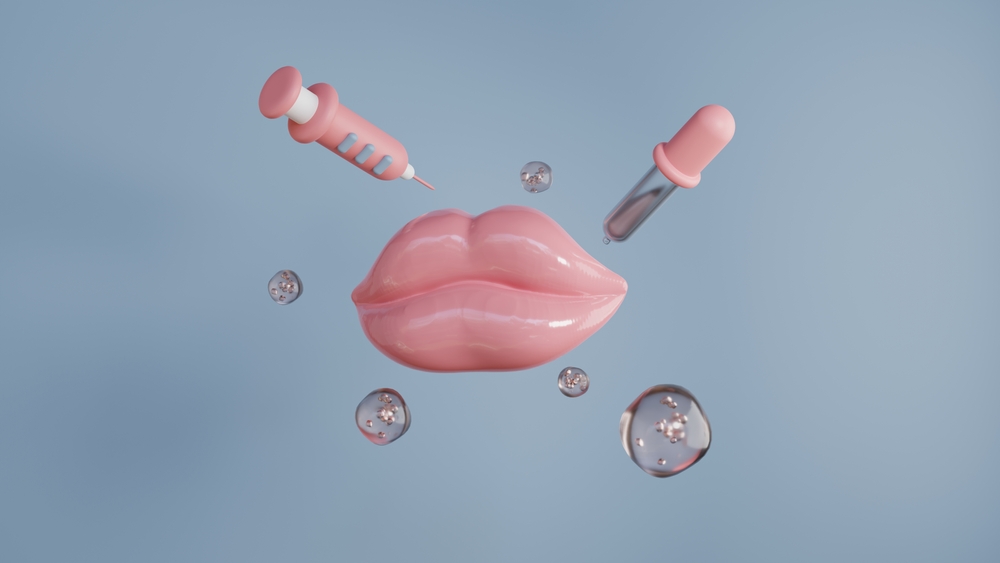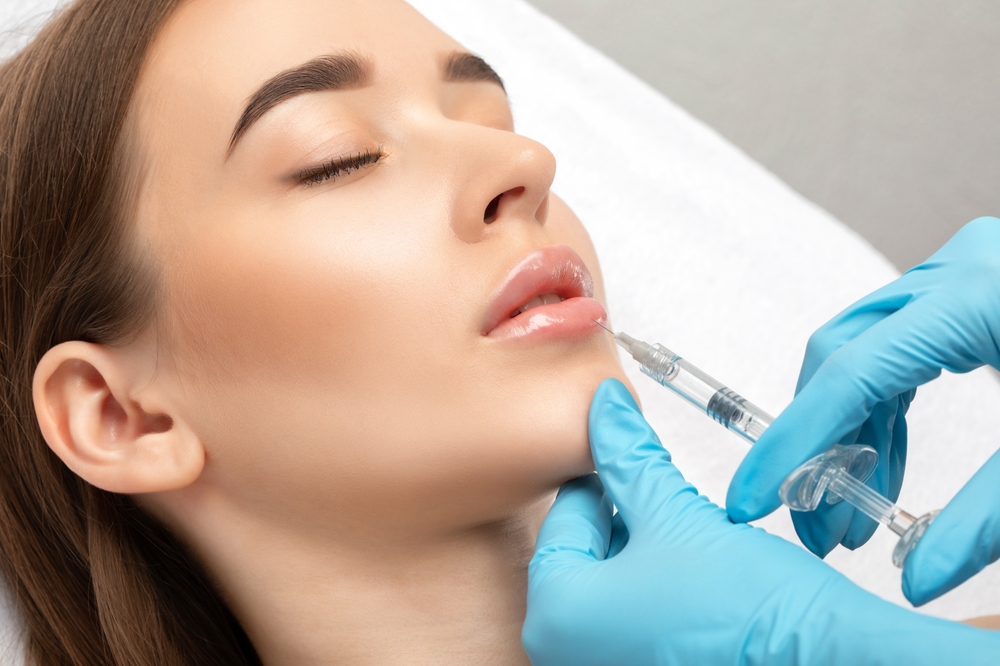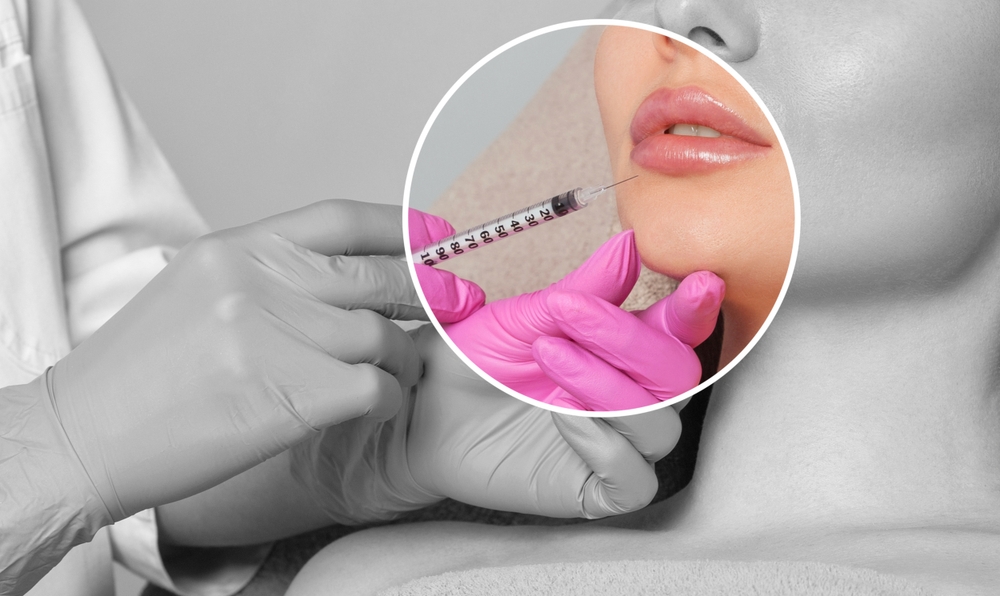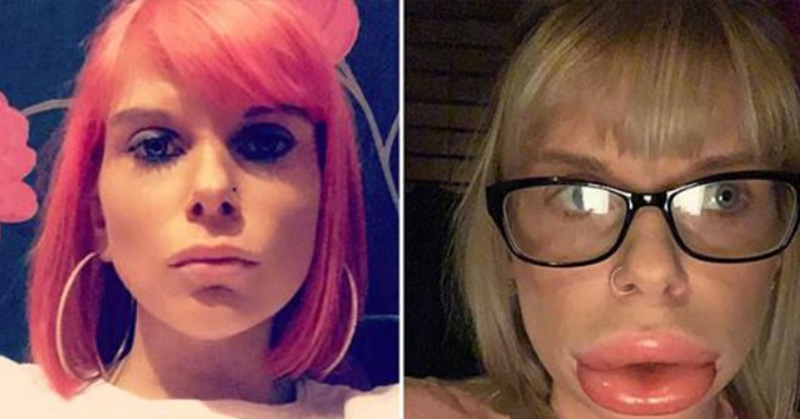Christina Burton, 29, from Greater Manchester in England, paid almost $100 for an at-home lip filling procedure. A beautician came to her home to give her dermal fillers. When Christina’s lips started to swell, they assured her the swelling was normal and continued with the procedure. But Christina said she knew something wasn’t right. “My lips were tingling and felt like they were swelling up straight away.”
Four hours after the procedure, Christina’s lips were so swollen and painful that she said she thought they would explode. Then, her throat became numb and closed up and she struggled to breathe before calling emergency services, who arrived and administered adrenaline. She was put on oxygen and kept overnight in the hospital.
This wasn’t the first time Christina had gotten lip fillers but says she’ll never do it again.

Christina is sharing her photos and her story in the hope that others will take caution and do the proper research when deciding to get lip fillers and understand that allergic reactions can happen to anyone. Christina believes it was the numbing cream that may have caused her reaction, but lip fillers themselves can cause painful swelling and infections if not done properly. Here’s how this wildly popular cosmetic treatment can be dangerous.
Read More: Woman Left with Hole in Face After Getting Cosmetic Fillers
What Exactly Are Lip Fillers?

Unfortunately, Christina’s story isn’t unique. Other people including celebrity Jeffree Star have gone public about their botched lip filler procedures that left them with damage or in some cases severe medical reactions that required a hospital stay [1]. Lip fillers are also known as lip augmentation. It’s a cosmetic procedure that makes your lips appear fuller. 2.7 million soft-tissue filler procedures were performed in the United States alone in 2018 [2].
Yes, it involves a needle, and yes, things can go wrong. Lip fillers use an active ingredient called hyaluronic acid, a naturally occurring substance found in body tissues, but they do contain other ingredients. While they’re generally safe, they can cause swelling, bruising, and itching in patients. Allergic reactions to hyaluronic acid are rare, as they occur naturally in our bodies, however, some may be allergic to lidocaine, the numbing agent often used in these procedures [3].
Lip fillers can last from four months to one year and, when done correctly at the office of a licensed medical professional, can cost anywhere between $500 and $2,000 depending on how many injections you need to achieve the results you want, with $900 being average [4].
How to Properly Research a Lip Filler Treatment

Medical professionals advise that women who are pregnant or nursing shouldn’t get lip fillers, and anyone who has an allergy or sensitivity to the ingredients used in the fillers, which a doctor can talk with you about prior to your procedure, should avoid them as well. While swelling or bruising is common and considered a normal reaction for a few days after the procedure, allergic reactions like Christina’s are rare. It’s important to note that everyone is different and may react differently to lip fillers although infections and fatal reactions aren’t common.
Here are a few essential tips when considering lip fillers:
- Research the doctor. You should look for a Board-Certified Plastic Surgeon and review the photos and reviews of the doctor’s work, or even get a referral from someone you know.
- Know what products they use. There are several products that physicians may use to inject into your lips—you want to know what you’re getting and discuss the risk of reactions and infections with your doctor before the procedure.
Don’t be surprised if they mix different ones, as this is a common practice to achieve desired results, but you should absolutely know what’s being injected into your body.
- Be informed of aftercare. You need to know how to care for your lips following the procedure. Physicians may suggest avoiding exercise, makeup, dental cleanings, and even aspirin before and after the procedure, but follow your doctor’s specific instructions [5].
- Follow up. Ensure that the physician providing your treatment will be available in the event of questions and require you to come in for a follow-up appointment after the procedure to ensure your lips are healing and that no reaction or infection has taken place.
Symptoms to Look Out for with Botched Lip Filler Procedures

You may not notice immediately that something is wrong like Christina did with her procedure. This is why it’s important to know what’s normal and what’s not when it comes to his cosmetic procedure. Allergies can take hours to occur in some cases, or they may happen immediately [6]. Everyone is different and you should know the signs of a procedure gone wrong and contact your doctor with any questions.
Here’s what’s considered normal after a lip filler procedure:
- Bruising, swelling, and bleeding at the injection site
- Redness and tenderness at the injection site
- Recurrence of cold sores or fever blisters
However, the following symptoms are not considered normal and should always be followed up with by a doctor [3]:
- Severe swelling or bruising that won’t go away even after a week
- Parts of your lips being different sizes, or lumps in the lips
- Scarring or stiffening of the lip
- Itching around the lips or swelling which could be indicative of an allergic reaction
- Fever
If you notice any of these signs or symptoms, call your doctor right away or seek emergency medical care—remember, allergic reactions can be fatal!
Read More: Man Receives Facial Surgery in Turkey, and People Can’t Believe ‘Impossible’ Transformation.
Are There Natural Alternatives to Lip Fillers?

While it’s hard to achieve the results we see in celebrities without getting lip fillers done by a plastic surgeon, there are a few natural ways you can increase the appearance of the volume of your lips [7]: Let’s not forget that lip injections are subject to animal testing, so seeking cruelty-free options can save animals and be better for your health!
- Use lip plumping products. Choose cruelty-free ones, of course. A few examples include Too Faced, NYX, bareMinerals, and e.l.f, but there are many more out there!
- Exfoliate your lips. Get rid of dead skin and increase circulation with a good lip exfoliator. This can not only make your lips appear smoother and fuller but will just feel good!
- Try going matte. Matte lipsticks make lips appear bigger than they really are, so give them a try instead of going for lip injections.
- Spice things up. You can try spices and herbs made into lip masks such as cinnamon, peppermint, and cayenne pepper to give your lips a plumper pout [8].
As with any product or treatment out there, educating yourself and staying informed of the risks can help you make the best choice for your health and for the planet. While lip fillers are all the rage, a little self-love can do wonders for your confidence in a way a needle can’t provide!
Read More: Breakthrough Reveals How Botox Infiltrates Brain Cells
Sources
- https://www.youtube.com/watch?v=y-TDy-QX9eA
- https://www.plasticsurgery.org/documents/News/Statistics/2018/top-five-cosmetic-plastic-surgery-procedures-2018.pdf
- https://www.webmd.com/beauty/cosmetic-procedures-lip-augmentation#2
- https://www.foxnews.com/lifestyle/lip-fillers-everything-you-need-to-know-from-a-top-doctor
- https://www.allure.com/story/cosmetic-injectable-filler-procedure-guide
- https://www.ncbi.nlm.nih.gov/pmc/articles/PMC4728901/
- https://www.ladyqs.com/natural-alternatives-lip-fillers/
- https://hudabeauty.com/ditch-lip-injections-with-these-9-hacks/
- https://www.dailymail.co.uk/health/article-6958723/Mother-29-claims-filler-treatment-left-sausage-lips.html

